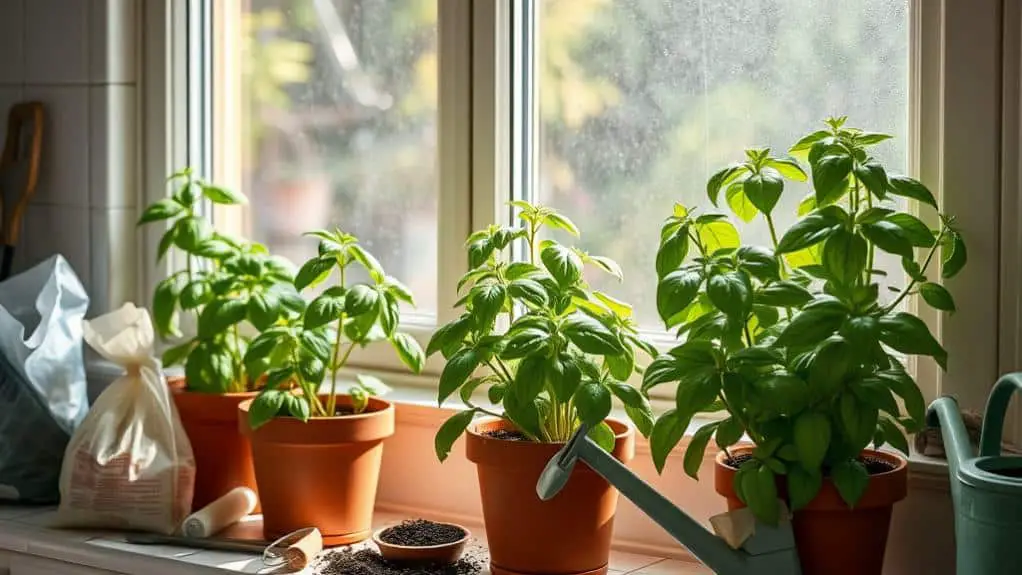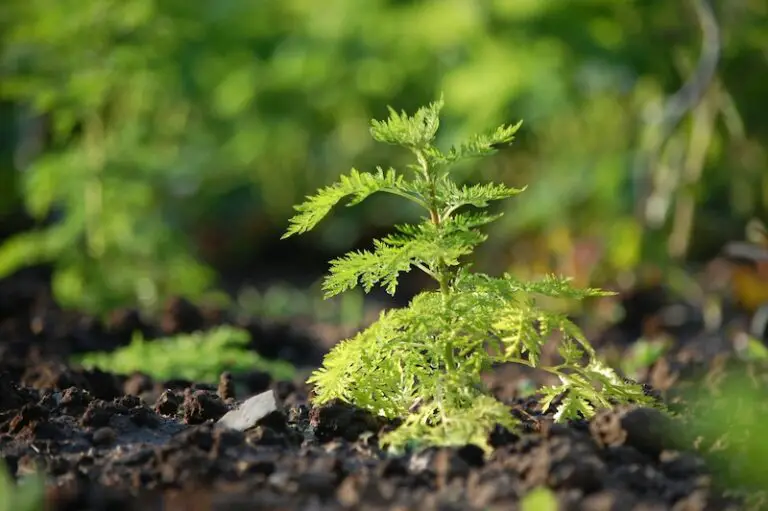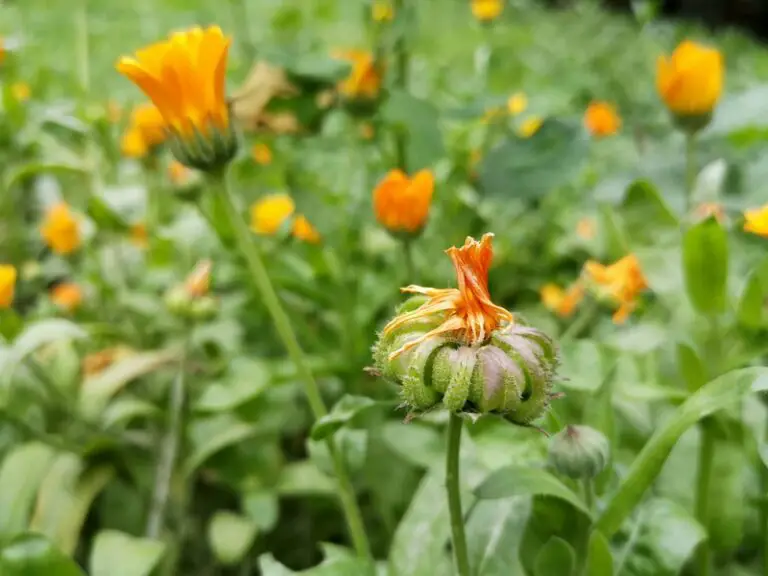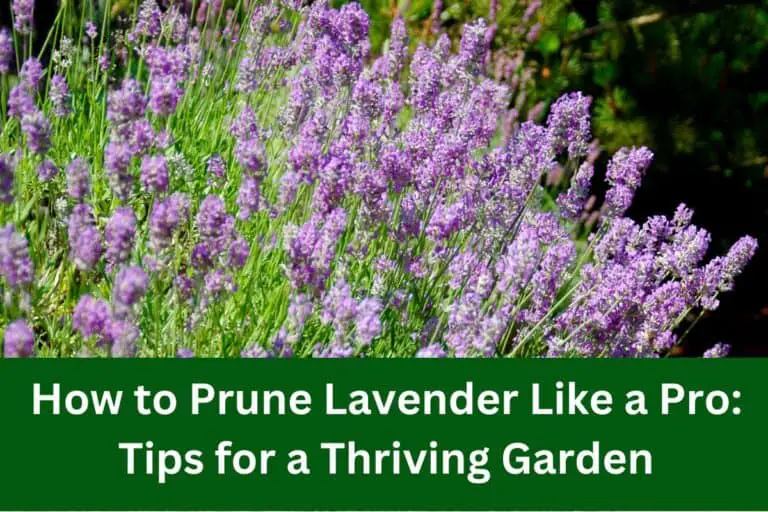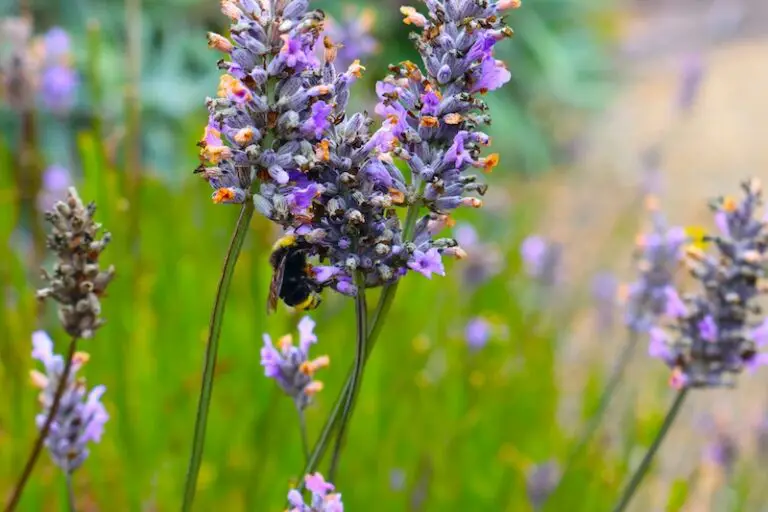6 Tried And True Tips For Growing Basil Indoors
Growing basil indoors can be both a delightful and challenging endeavor, especially when the right techniques aren’t followed. I’ve spent years perfecting my indoor garden, and basil has always been a favorite. From choosing the right variety to mastering watering techniques, there are several essential steps that guarantee your basil thrives. For instance, did you know that the type of basil you select greatly impacts its growth indoors? Join me as I share six tried and true tips that will transform your indoor basil-growing experience and turn your kitchen into a fragrant, green haven.
Choose the Right Variety

When it comes to growing basil indoors, starting off on the right foot means choosing the right variety. Over the years, I’ve experimented with countless basil varieties, and believe me, each has its own unique charm and flavor profile.
For a classic taste, you can’t go wrong with Genovese basil. Its sweet, slightly peppery flavor is perfect for making pesto or adding a fresh kick to your pasta dishes.
If you’re looking for something a bit different, give Thai basil a try. It has a distinctive anise-like flavor that pairs wonderfully with spicy curries and stir-fries.
Then there’s Lemon basil, which has a citrusy zing that brightens up salads and fish dishes.
For those who love a hint of spice, Cinnamon basil offers a sweet and spicy twist that’s delightful in both savory and sweet recipes.
And if you’re a fan of aromatic herbs, the clove-scented Holy basil, also known as Tulsi, is a must-try.
Selecting the right basil variety is more than just a choice; it’s the first step in crafting a culinary experience that can transform your indoor garden into a gourmet haven.
Proper Lighting
When it comes to proper lighting for indoor basil, I’ve found that natural sunlight exposure is key to robust growth.
Place your basil near a south-facing window where it can soak up at least six hours of direct sunlight daily.
If natural light is limited, don’t hesitate to use artificial grow lights to guarantee your basil thrives.
Natural Sunlight Exposure
Guaranteeing your indoor basil receives adequate natural sunlight is essential for its growth and flavor.
I’ve found that placing your basil in a south-facing window works wonders. This spot offers the most consistent and intense sunlight throughout the day, which basil absolutely loves. If south-facing windows aren’t an option, east or west-facing windows can also suffice, though you might need to rotate your plant to verify it gets even light exposure.
Basil thrives with about six hours of sunlight daily.
Pay attention to indoor temperature considerations too; basil enjoys warmth and consistent temperatures between 70-85°F. If the temperature drops too low, your basil might sulk and lose some of its luscious charm.
When thinking about basil companion plants, consider grouping basil with other sun-loving herbs like rosemary or oregano.
Not only do they share similar light and temperature needs, but they can also create a little indoor herb garden that’s both practical and beautiful.
Artificial Grow Lights
Artificial grow lights can be a game changer for growing basil indoors, especially if natural sunlight is limited. Trust me, I’ve been there—struggling to keep basil thriving in dim corners of my kitchen. The right LED options can transform your basil from weak to vibrant.
Firstly, consider the color spectrum. Full-spectrum LED options are ideal. They mimic natural sunlight, providing the red and blue wavelengths basil craves for photosynthesis. Here’s a quick comparison:
| Feature | LED Grow Lights | Fluorescent Lights |
|---|---|---|
| Energy Efficiency | High | Moderate |
| Heat Emission | Low | High |
| Lifespan | 50,000 hours | 10,000 hours |
Light positioning is vital. Place the LED grow lights about 6-12 inches above the basil. This distance guarantees they get enough light without scorching the leaves. Adjust the height as the plant grows—keeping it consistent is key. I learned the hard way that too close means burnt leaves, too far means leggy plants.
Set your lights on a timer. Basil needs about 14-16 hours of light daily. Turning lights on and off manually is a hassle, and a timer guarantees consistent light exposure.
Embrace these tips, and watch your indoor basil flourish beautifully!
Ideal Soil Mix

Getting the soil mix right is essential for growing basil indoors, so I always start with well-draining potting soil to prevent root rot.
I mix in nutrient-rich components like compost or worm castings to give the plants a healthy boost.
Ensuring the pH level stays balanced around 6.0 to 7.0 is key to thriving basil plants.
Well-draining Potting Soil
When growing basil indoors, it’s crucial to choose a well-draining potting soil that provides the right balance of nutrients and moisture retention. Trust me, I’ve tried and tested various mixes, and nothing beats the satisfaction of seeing your basil flourish.
First, let’s talk container selection. Your pot should have ample drainage holes to allow excess water to escape; basil despises soggy roots.
I usually opt for a mix that includes equal parts of high-quality potting soil, perlite, and coconut coir. The potting soil offers a nutrient-rich base, but we’ll explore that later. Perlite is fantastic for aeration, guaranteeing your basil roots get plenty of oxygen. Coconut coir, on the other hand, excels in moisture retention without becoming waterlogged. This trio creates the perfect environment for your basil plants to thrive.
When you’re filling your pot, confirm the mix is well-blended. You want the soil to be fluffy and light, allowing air to circulate freely around the roots. This helps prevent root rot and encourages robust growth.
Nutrient-Rich Components
Now that we’ve got the ideal potting mix, let’s focus on the nutrient-rich components that will give your basil the boost it needs. You see, basil is a hungry herb, and it thrives when given the right nutrients.
I always start with a balanced, organic fertilizer. Look for one that’s rich in nitrogen, phosphorus, and potassium. These elements are essential for lush, green growth and robust root systems.
Beyond the basic fertilizer, consider adding compost to your soil mix. Compost is like a natural buffet of nutrients, slowly releasing goodness over time, ensuring your basil doesn’t suffer from nutrient deficiencies.
I also find worm castings incredibly beneficial. They’re packed with essential microbes that enhance soil health and nutrient absorption.
Every few weeks, I like to give my basil a little extra love with a liquid seaweed or fish emulsion feed. These organic fertilizers provide a quick boost, especially if you notice any signs of nutrient deficiencies, such as yellowing leaves or stunted growth.
Ph Level Balance
Maintaining the right pH level is essential for keeping your basil healthy and thriving. I’ve learned that balancing the acidity levels in your soil can make all the difference in your basil’s growth optimization.
Here are some detailed tips for perfecting your basil’s pH level balance:
- pH Testing: Regularly test your soil’s pH levels. Basil prefers slightly acidic to neutral soil, ideally between 6.0 and 7.0. pH meters or test kits are great tools for this.
- Soil Amendments: If the pH is too low (too acidic), consider adding lime to raise it. Conversely, if it’s too high (too alkaline), sulfur can help lower it. These adjustments will enhance nutrient absorption and root health.
- Microbial Activity: A balanced pH promotes beneficial microbial activity. These microbes break down organic matter, aiding in nutrient availability for your basil.
- Base Saturation: Guarantee a good mix of soil amendments to maintain base saturation. This prevents nutrient deficiencies, supporting robust growth.
Watering Techniques
Although it might seem simple, watering basil indoors requires a bit of finesse to secure your plants thrive. I’ve learned through trial and error that the right balance of moisture is essential. Too much water can drown the roots, while too little can leave the plant parched.
First, let’s talk about drainage methods. Confirming your pot has adequate drainage holes is critical. Without them, water can accumulate at the bottom, leading to root rot. I like to place a layer of small pebbles at the base before adding soil, which helps improve drainage.
Next, consider the humidity levels. Basil loves a humid environment, so I often mist my plants lightly each morning, especially during the dry winter months.
Here’s a quick reference table to guide you:
| Aspect | Ideal Condition | My Tip |
|---|---|---|
| Water Frequency | When soil is dry to touch | Use your finger to test soil moisture |
| Drainage Methods | Well-draining pots | Add a layer of pebbles at the bottom |
| Humidity Levels | 40-60% | Mist plants daily, especially in dry seasons |
| Water Amount | Moderate | Confirm water drains out of the pot holes |
| Water Temperature | Room temperature | Avoid cold water to prevent shock |
Pruning and Harvesting

Pruning and harvesting basil indoors is a rewarding practice that not only keeps your plant healthy but also guarantees a steady supply of fresh leaves. Let me share with you some tried-and-true tips to make the most out of your basil plants.
First, understanding the right pruning frequency is essential. I recommend pruning your basil every couple of weeks. This encourages bushier growth and prevents your plant from becoming leggy. When pruning, always cut above a leaf node; this is where new branches will sprout.
Here are some key harvesting techniques you should consider:
- Pinch and Trim: Use your fingers to pinch off the top sets of leaves. This stimulates growth and keeps your basil from flowering too soon.
- Cut Above a Node: Always cut just above a pair of leaves or a node. This helps the plant produce more branches and leaves.
- Regular Harvests: Harvest regularly, even if you don’t need the leaves immediately. This keeps the plant in a constant state of growth.
- Morning Harvests: For the best flavor, harvest in the morning when the essential oils are most concentrated.
Pest Control Strategies
How do you keep your indoor basil plants free from pests? I’ve found a few strategies that work wonders. First, natural repellents are your best friends. I mix a bit of neem oil with water and gently spray it on the leaves. This keeps aphids and spider mites at bay. Another trick is to use companion planting. Place a pot of marigolds next to your basil. Marigolds release a scent that repels many common pests.
Here’s a snapshot of my favorite pest control strategies:
| Strategy | Benefit |
|---|---|
| Neem Oil Spray | Repels aphids and spider mites |
| Companion Planting | Marigolds deter a variety of pests |
| Regular Inspection | Catches infestations early |
Make sure to inspect your plants regularly. Look under the leaves and at the stems. If you catch any signs of pests, act fast. I’ve found that a little vigilance goes a long way in keeping my basil healthy. Remember, a healthy plant is less likely to attract pests, so keep your basil well-watered and properly fed. These simple steps will keep your indoor basil thriving and pest-free.
Frequently Asked Questions
Can Basil Be Grown Year-Round Indoors?
Yes, you can grow basil year-round indoors. By ensuring ample basil light and maintaining proper indoor humidity, your basil plants will thrive. I’ve done it myself, and the fresh, aromatic leaves make it totally worth it!
How Do I Prevent My Basil From Becoming Leggy?
Think of basil like a sun-loving dancer; it needs ample light to stay graceful. Guarantee it gets enough light requirements and keep soil moisture consistent, not soggy. This way, it won’t grow leggy and weak.
What Temperature Range Is Best for Indoor Basil?
The ideal temperature range for indoor basil is 70-75°F. Guarantee ideal humidity around 40-60% and meet lighting requirements by providing at least 6 hours of sunlight daily. Your basil will thrive in these conditions.
Are There Companion Plants That Benefit Basil When Grown Indoors?
Imagine basil thriving like a king with its court; sage and parsley are perfect basil companions. In indoor gardening, they create a micro-ecosystem, boosting each other’s growth. I’ve found this combination works like magic.
How Can I Propagate Basil From Cuttings?
To propagate basil from cuttings, I snip a 4-inch stem below a leaf node. Different basil varieties root well. Place the cutting in water, changing it frequently. Once roots form, plant it in soil.
Conclusion
With these six tried and true tips, you’ll be swimming in basil before you know it! Choosing the right variety, ensuring proper lighting, using the ideal soil mix, mastering watering techniques, pruning regularly, and keeping pests at bay will turn your indoor basil into a thriving green paradise. Trust me, I’ve been growing basil for years, and these strategies make all the difference. Happy gardening, and may your basil plants flourish beyond your wildest dreams!

